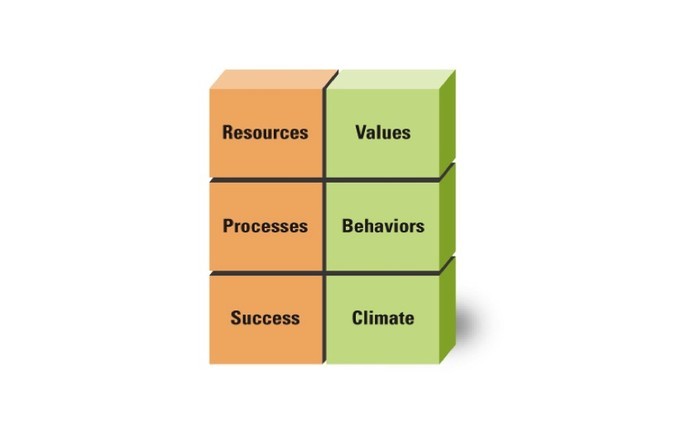This is the first post in a two post series that examines the best practices of innovative companies and the factors that predict whether a particular firm would innovate or not on a consistent basis. Jeff McHugh is an Associate Professor of Management in the Crowell School of Business.
Innovation defines the future of every organization, so it is no surprise that most organizations strive to become more innovative. The challenge however is discovering how to become more innovative and sustain it. It is not that easy. Companies ask their team members to read books and articles about innovation, attend conferences, enroll in courses, but they struggle to become more innovative on a consistent basis. They are puzzled at how some companies routinely innovate, creating and marketing breakthrough products. They wonder how they do it.
The answer is culture. Multiple studies have shown that corporate culture is the most important driver of a company’s ability to innovate. Corporate culture is a much more important driver of innovation than labor, capital, government or national culture. This raises two more questions. What are the characteristics of an innovative corporate culture? Is it possible to build a culture of innovation if you do not have one?
After studying innovation among 759 companies in 17 major markets, researchers Gerard J. Tellis, Jaideep C. Prabhu and Rajesh K. Chandy published their results in an article in the MIT Sloan Management Review in March, 2013. This research answered both questions above and concluded that there are six building blocks that must be in place to build a culture of innovation.

When most organizations embark on a mission to become more innovative, they usually focus on the three blocks on the left hand side of the diagram, because they are easier to measure and easier to manage. Most companies have given much less attention to the people oriented, harder to measure drivers of an innovative culture – values, behaviors and climate. Anything that involves people’s values, behaviors and workplace climate is difficult to manage and evaluate. As one CEO stated in the MIT Sloan study, “The soft stuff is the hard stuff”. Yet the researchers state that the “soft stuff” (right hand side building blocks above) have the greatest power to shape a culture of innovation and create a sustained competitive advantage for an organization.
Let’s look at these six building blocks in a little more detail. The MIT Sloan study found that “truly innovative companies have at least one of the building blocks solidly in place”.
- Values reflect how a company behaves and allocates their resources. The most innovative companies invest in continuous education, they value individual creativity but they also insist on teamwork. Innovation is a priority and resources are allocated to advancing innovation in the most innovative companies. They walk the talk.
- Behaviors reflect how people act in an organization to stimulate innovation. A sense of inquiry, of curiosity and having an open mind is essential for innovation. Language shapes culture and the most innovative companies consistently use optimistic and positive language in the workplace. Executive leadership encourages new ideas and risk-taking in innovative companies.
- “Climate is the tenor of workplace life” according to the MIT Sloan study. “An innovative climate”, the researchers write, “cultivates engagement and enthusiasm, challenges people to take risks within a safe environment, fosters learning and encourages independent thinking.”
- Resources are people, systems and projects, but people are the most important by far. The most innovative companies invest in extensive training programs and develop internal innovation champions to ensure the organization does not follow innovation success with inertia. These human resources are then nurtured and developed.
- Processes are the methods to draw on the collective creativity of an organization’s employees and implement the best ideas in a systematic manner.
- Measurement of success speaks to internal recognition and reward programs that reinforce innovative behaviors. It also includes external recognition by customers and industry associations.
Final Thoughts
To build a sustainable culture of innovation, you need to address the values, behaviors and workplace climate in your organization up front. These building blocks are hard to measure and hard to manage, but they are the differentiators between organizations that have innovative cultures and those that wish they did. Organization leaders must be willing to adopt the prescribed values and behaviors themselves and then invest in training programs that enable their associates to learn new innovation methods. You also have to remember that like any organization, if you get into an operational mindset, where you’re just doing the job, it is easy to forget about innovation. Leaders that recognize the importance of nurturing the innovators and allowing grassroots activism can build a culture that enables teams to routinely innovate.
 Biola University
Biola University

.jpg)
.jpg)

